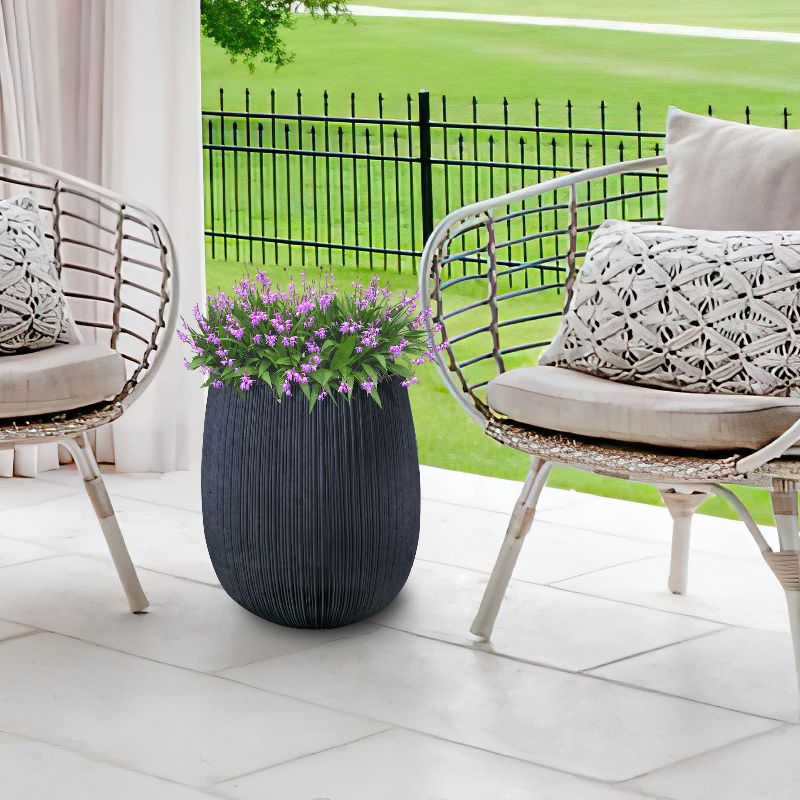United States of America:
Pots are for indoor and small balcony gardening, emphasizing personalization. Planters are for larger gardens or agricultural, promoting root growth and community engagement.
-Pots are predominantly utilized for indoor decoration and small balcony gardening, frequently employed to cultivate diminutive ornamental plants such as succulents and herbaceous flowers. These potted arrangements not only emphasize personalization and aesthetic appeal but also allow homeowners to express their design preferences through a selection of diverse materials, colors, and shapes. Furthermore, urban residents in the United States often take advantage of window sills or rooftop spaces for vertical gardening initiatives aimed at enhancing greenery within their living environments.
- Planters are more commonly associated with expansive gardens or agricultural settings, designed to accommodate larger plants or vegetables. They typically exhibit enhanced functionality and practicality by supporting root development while providing adequate soil depth. In community gardening projects, planters serve as communal planting areas that foster neighborly engagement through collaborative planting activities.
United Kingdom :
Pots are essential in English gardens for specific flower growth and aesthetics, while planters are common in parks and estates for visual appeal.
- Pots hold significant importance within the context of English garden aesthetics, frequently used to cultivate specific flower varieties such as roses and tulips that harmonize with the overall landscape design. Many households opt for ceramic pots adorned with traditional motifs or classic designs, rendering them distinctive features within gardens. Additionally, during festive occasions like Easter in springtime, individuals utilize pots to showcase seasonal blooms that contribute to celebratory atmospheres.
- Planters are prevalent in large public parks or private estates where they facilitate grouped plantings or displays. The design considerations for these planters often encompass visual impact alongside ecological balance; varying heights and widths create a visually dynamic spatial arrangement. Moreover, certain historic manor houses incorporate classical-style large planters to enhance the architectural aesthetics of their facades.
Nordic:
Pots follow Nordic minimalist design indoors with natural materials and herbs. Planters are on outdoor balconies, supporting cold-hardy plants and having insulation and drainage.
- Pots generally embody a minimalist aesthetic aligned with Nordic interior design principles. Individuals favor small containers crafted from natural materials placed throughout indoor spaces to infuse vitality into their surroundings. For instance, positioning fresh herbs near kitchen windows serves dual purposes: it provides culinary ingredients while fostering an invigorating ambiance.
- Planters are commonly observed on outdoor balconies or compact gardens where they support the cultivation of flora suited for colder climates—such as cold-hardy perennial herbs and select shrubs. These planters typically feature effective insulation properties along with well-engineered drainage systems designed to prevent water accumulation detrimental to root health. During winter months, some families may relocate planters indoors to safeguard valuable plants.
Australia:
Pots on urban balconies in arid regions are for drought-resistant plants, while planters in rural Australian gardens are for native plants.
- Pots find extensive application on urban apartment balconies—particularly in arid regions—where inhabitants tend toward drought-resistant species like cacti and succulents for cultivation purposes. The construction materials selected for these pots prioritize moisture retention capabilities while ensuring sufficient ventilation and air permeability conducive to healthy root growth patterns. Additionally, due to fast-paced urban lifestyles, portable smaller-sized pots have gained popularity among residents seeking flexibility in adjusting greening layouts.
- Planters primarily function within spacious rural gardens or farms dedicated towards large-scale cultivation of indigenous plant species—including wild shrubs and medicinal herbs native specifically Australia’s ecosystem conditions . Given local hot dry climate characteristics ,these planter types necessitate optimal heat dissipation coupled with ventilation attributes essential maintaining soil moisture levels promoting robust growth outcomes . Concurrently ,local agricultural practitioners increasingly integrate sustainable practices employing crop rotation strategies optimizing land use efficiency .
It is crucial note that aforementioned descriptions represent general observations ;specific applications regarding pot versus planter usage vary significantly influenced myriad factors including individual preferences cultural customs climatic variations . Consequently practical implementations require careful adjustments selecting appropriate styles tailored unique circumstances .




